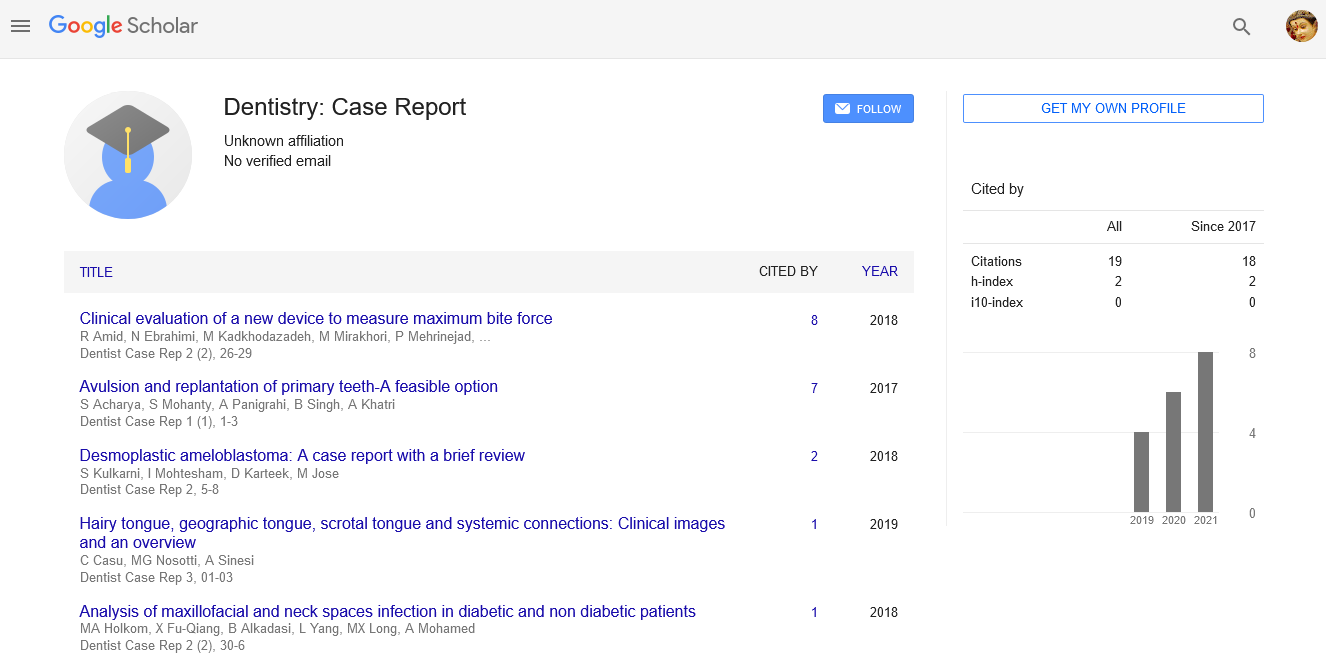Dental education and dental research
Received: 11-Mar-2022, Manuscript No. puldcr-22-4695; Editor assigned: 13-Mar-2022, Pre QC No. puldcr-22-4695; Reviewed: 20-Mar-2022 QC No. puldcr-22-4695; Revised: 24-Mar-2022, Manuscript No. puldcr-22-4695; Published: 27-Mar-2022, DOI: 10.37532.puldcr.22.6.2.1
This open-access article is distributed under the terms of the Creative Commons Attribution Non-Commercial License (CC BY-NC) (http://creativecommons.org/licenses/by-nc/4.0/), which permits reuse, distribution and reproduction of the article, provided that the original work is properly cited and the reuse is restricted to noncommercial purposes. For commercial reuse, contact reprints@pulsus.com
Abstract
The key goal for Dental education is to develop future practitioners, which is manifested through both change and continuity. The goal of dental education is to teach students how to better serve their patients and communities, as well as to equip them to continue to learn new skills and expand their knowledge throughout their careers. Continuing dental education is essential for all dental professionals to provide the finest service possible while also having access to the most up-to-date preventive, diagnostic, and treatment approaches
Introduction
Dental research will provide experts with the opportunity to contribute to dental research while also becoming more familiar with the most recent advancements and technologies. Dental research and discoveries have resulted in revolutions and paradigm shifts in professional practice, allowing dental students to get a thorough awareness of the biosocial underpinnings of the dental discipline. Orofacial dentistry focuses on patients suffering from muscle, nerve, and joint discomfort in the head, neck, mouth, face, and jaw. Orofacial pain is a dental speciality that deals with the treatment, management, and diagnosis of jaw issues. Cosmetic dentistry refers to any dental procedure that improves the appearance (but not necessarily the function) of teeth, gums, and/or bites. It focuses mostly on improving dental aesthetics in terms of colour, spot, form, size, alignment, and overall appearance. Regardless of their specific school, speciality, training, or experience in this sector, many dentists refer to themselves as "cosmetic dentists." This has been deemed unethical because of the main impartiality of patient marketing. Cosmetic dentistry is not considered a legitimate specialist field of dentistry by the American Dental Association. However, some dentists still advertise themselves as cosmetic dentists. Present as a developing or persistent sore in the mouth. If not detected and treated early, oral cancer, which includes malignancies of the lips, tongue, cheeks, floor of the mouth, hard and soft palate, sinuses, and pharynx (throat), can be fatal. Dentists utilize lasers to remove overgrowth tissue, restructure the gums, and whiten teeth, among other procedures involving the inside of the mouth. Laser dentistry is sometimes the best option for children who are nervous or terrified of having dental work done.
In some cases, laser dentistry may cause less discomfort, reducing the need for anaesthetic and reducing anxiety in patients who are uncomfortable with the use of the dental drill. During soft tissue treatments, it reduces bleeding and swelling. During cavity removal, it may help to preserve the tooth. Dental instruments are equipment that dental professionals use to check, restore, alter tissues, and extract teeth. Furthermore, these are being used to address a variety of tooth problems and abnormalities. Dental mirrors, dental probes and retractors, dental hand items or dental drills and dental burs are only a few of the common dental equipment and appliances. Dental drills are the most commonly used instruments in dental procedures. A dental drill is a high-speed drill that is used to remove disease and shape the tooth structure before implanting a filling or a dental crown, or to remove current and temporary fillings before placing a new or permanent crown or filling. On the market, there are a plethora of dental handpieces/engines to choose from speed, friction, grip etc. Conservative dentistry is a branch of dentistry concerned with tooth preservation in the mouth. It encompasses many categories of direct and indirect restorations of individual teeth in the mouth, and it clinches the practice of operational dentistry and Endodontics. Conservative dentistry, in which only a small amount of healthy tooth structure is lost throughout the restoration process, is an intrinsically fascinating dental goal. One of the most popular and widely utilized treatments for maintaining the health of teeth is passageway therapy. During this procedure, the majority of the debris in the space is removed and filled with a variety of high-quality dentalfillings, which helps to prevent infection. Dentists, skilled workers, Dental Nurses, Dental Assistants, science laboratory technicians, and receptionists are all part of a dental team. The dentist is responsible for the majority of the things that a dental nurse is responsible for. This leads to an increase in the amount of time it takes to gloss the procedure as well as a fall in production. A dental nurse helps to bridge the gap by performing a variety of tasks.





